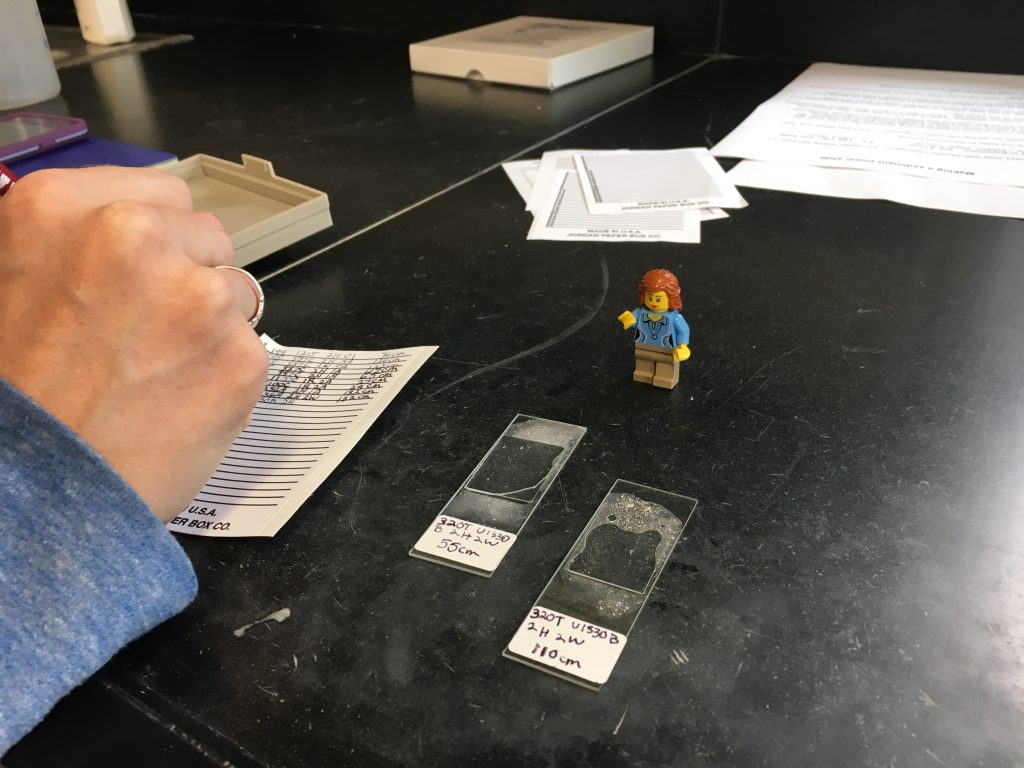Identifying sediments and microfossils
Being at sea on such a large vessel is a new experience for me, and each day has been exciting. The Philippines are beautiful, and the geology is amazing.
Our morning began with a dolphin sighting off the port side, where we also saw flying fish!
The remainder of the day was spent observing marine sediment cores and making smear slides. Smear slides are a quick and easy way for sedimentologists to identify sediment styles in the core.


Marine sediments are typically broken down into two major categories: Biogenic oozes (yes, ooze is a technical term!) and Lithogenic. Biogenic sediments include siliceous and calcareous organisms. These tests (shells), which are typically small (10-100 microns across), include diatoms and radiolarians, foraminifera and coccolithophores. Lithogenic sediments include: terrigenous, glaciomarine, red clays, and volcanic ash. Identifying different sediments can be challenging with the naked eye and therefore microscopes are often employed. We have been able to sample and identify each of the various styles of sediment and have discussed the global deposition of sediments and most importantly, why marine sediments are vital to understanding climate change.

Thanks for reading!
Guest blogger – Professor Chloe Branciforte, Ventura College